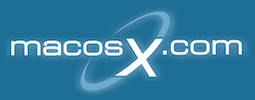Mobius Rex
Registered
This is hidden in your hard drive, automatically installed from your installation disk. Go here: Hard Drive > System > Library > Core Services > SecuritySystemPlugins >SCLoginPlugin.bundle(ctrl+click) > Show Package Contents > Contents > Resources.
These files, apparently, are used in conjunction with a Department of Defense common access card(cac): http://docs.info.apple.com/article.html?artnum=25526
If this is for use only by agents of the DoD, why is it installed on everyone's Mac?
Why is it hidden?; obviously, Apple doesn't want you to know that it's on your hard drive.
Is it to allow DoD agents to access any Mac and upload/download info from it or to it?
I contacted AppleCare about this, and the AppleCare tech people that I talked to were quite testy and brusque about this matter. I was told that this matter is "outside of AppleCare" and they are unable to provide any info about it. Period. End of the matter.
Yet, the above DoD files are automatically installed on our Macs' hard drives without our prior knowledge or consent. It seems that the stink of Big Brother is permeating everyone's lives, these days.
Do any of you have any answers, explanations or comments?
These files, apparently, are used in conjunction with a Department of Defense common access card(cac): http://docs.info.apple.com/article.html?artnum=25526
If this is for use only by agents of the DoD, why is it installed on everyone's Mac?
Why is it hidden?; obviously, Apple doesn't want you to know that it's on your hard drive.
Is it to allow DoD agents to access any Mac and upload/download info from it or to it?
I contacted AppleCare about this, and the AppleCare tech people that I talked to were quite testy and brusque about this matter. I was told that this matter is "outside of AppleCare" and they are unable to provide any info about it. Period. End of the matter.
Yet, the above DoD files are automatically installed on our Macs' hard drives without our prior knowledge or consent. It seems that the stink of Big Brother is permeating everyone's lives, these days.
Do any of you have any answers, explanations or comments?

